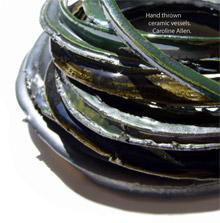Maja Gori (University of Heidelberg)
Until quite recently, the archaeological study of pottery was mainly centred on pottery forms and typology with the purpose of reconstructing chronological and cultural sequences. Types are in the statistical literature functional or non-functional elements which were in production or in mode over an extended period of time, place or within groupings. It can be argued that types represent the level of typological classification probably closer to what we can identify as an ancient model to whom the ceramists more or less consciously referred in their production. The concept of type involves a combination of material, mental and representational dimensions, since every type has necessarily a diagnostic attribute’s cluster, that is a recognisable quality or qualities that set each type apart from other types.
Starting from a selected case study (Sovjan, Albania) this paper wants to explore the relation between pottery typology as theoretical construct and instrument of inquiry, and potter’s creative process that led to the appearance of new decorations and shapes. In particular, this paper focuses on the relation between the creative practice and the emergence of new pottery types, their assimilation and subsequent diffusion in western Macedonia during the early second millennium BCE, at the passage from the Early to the Middle Bronze Age.


